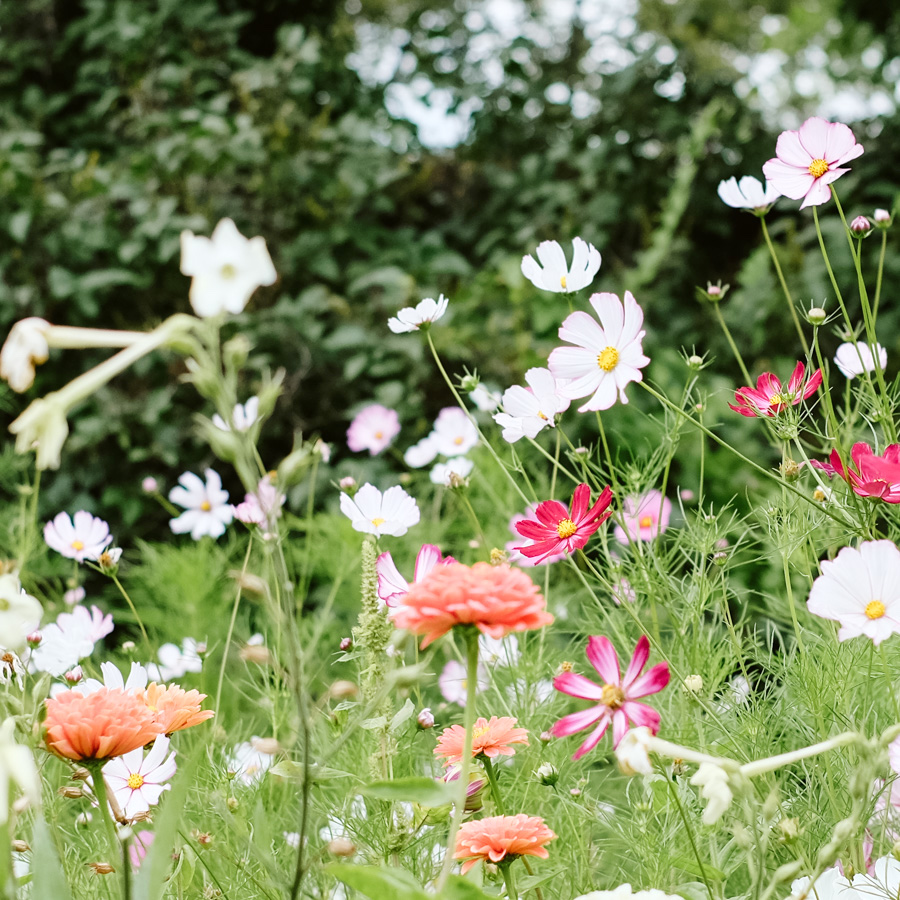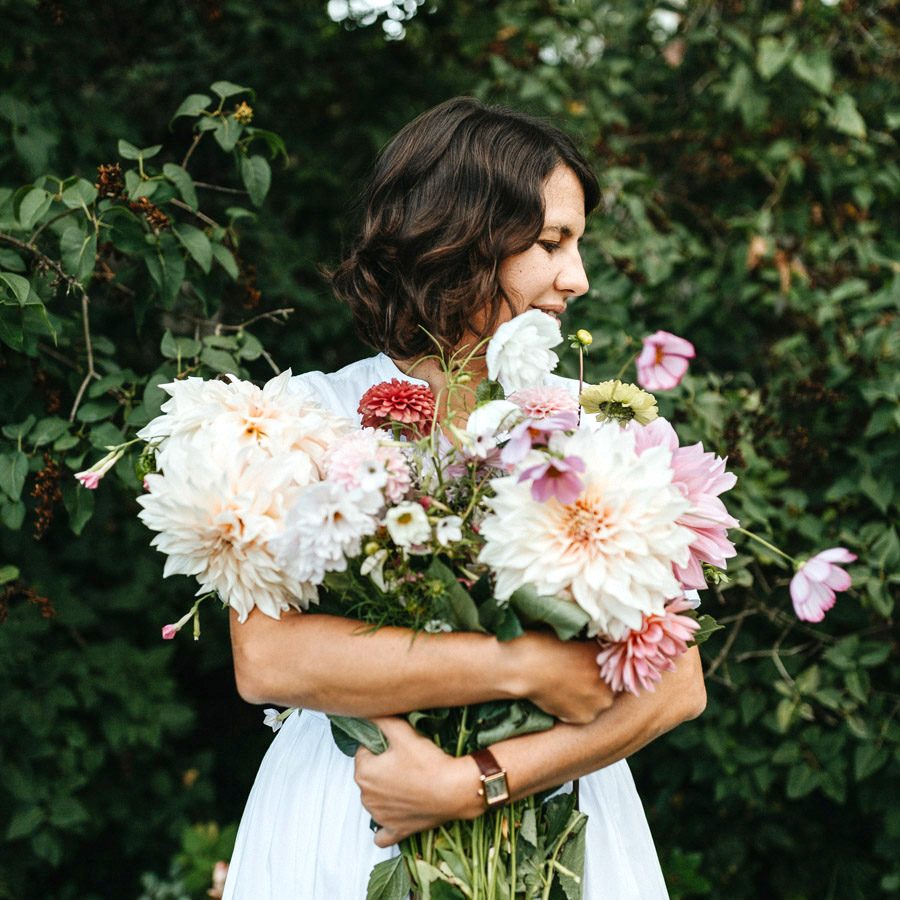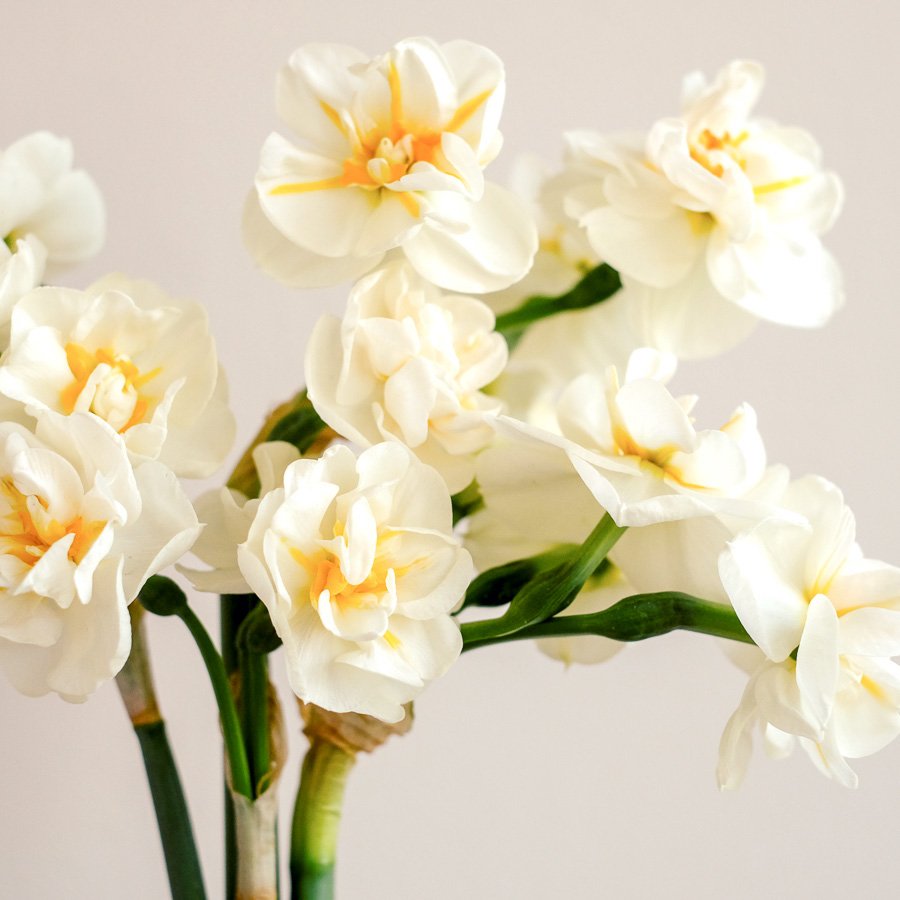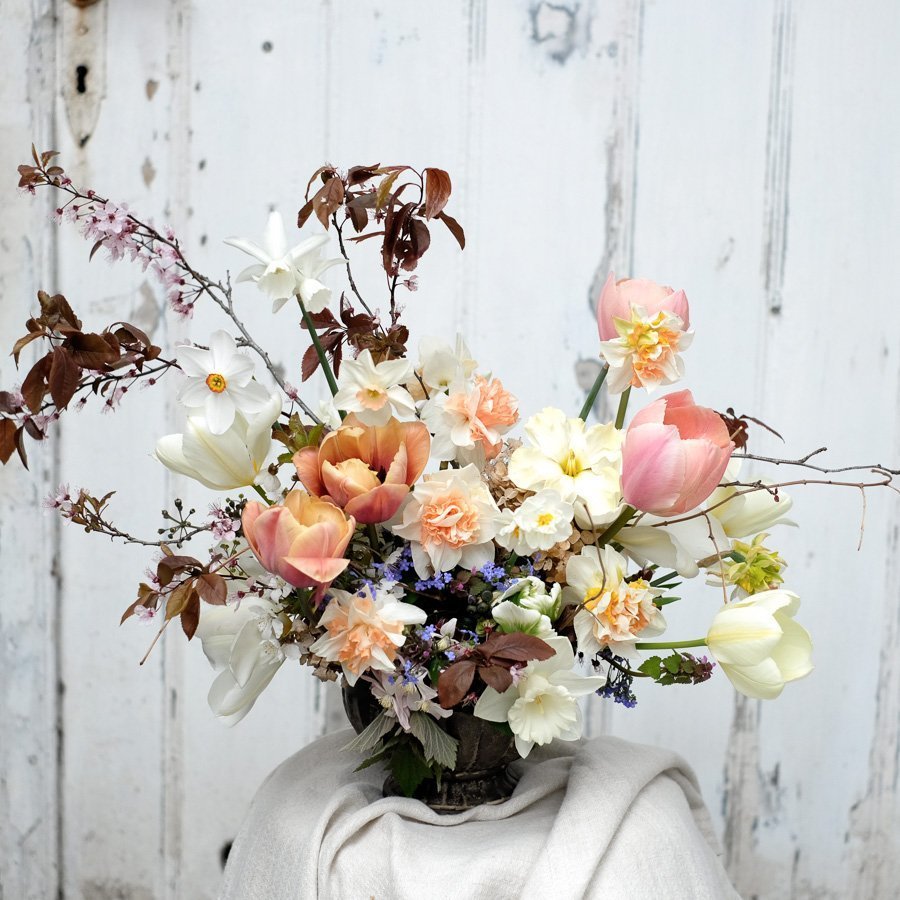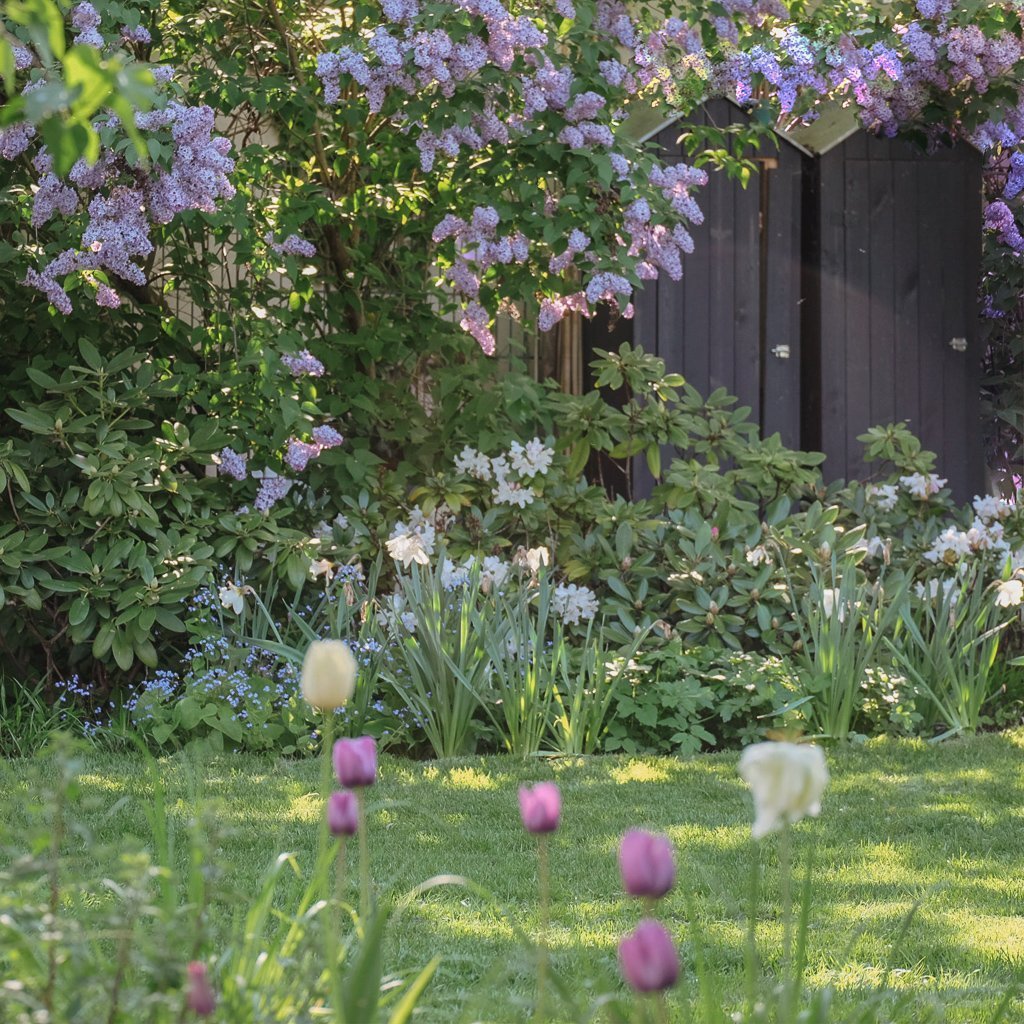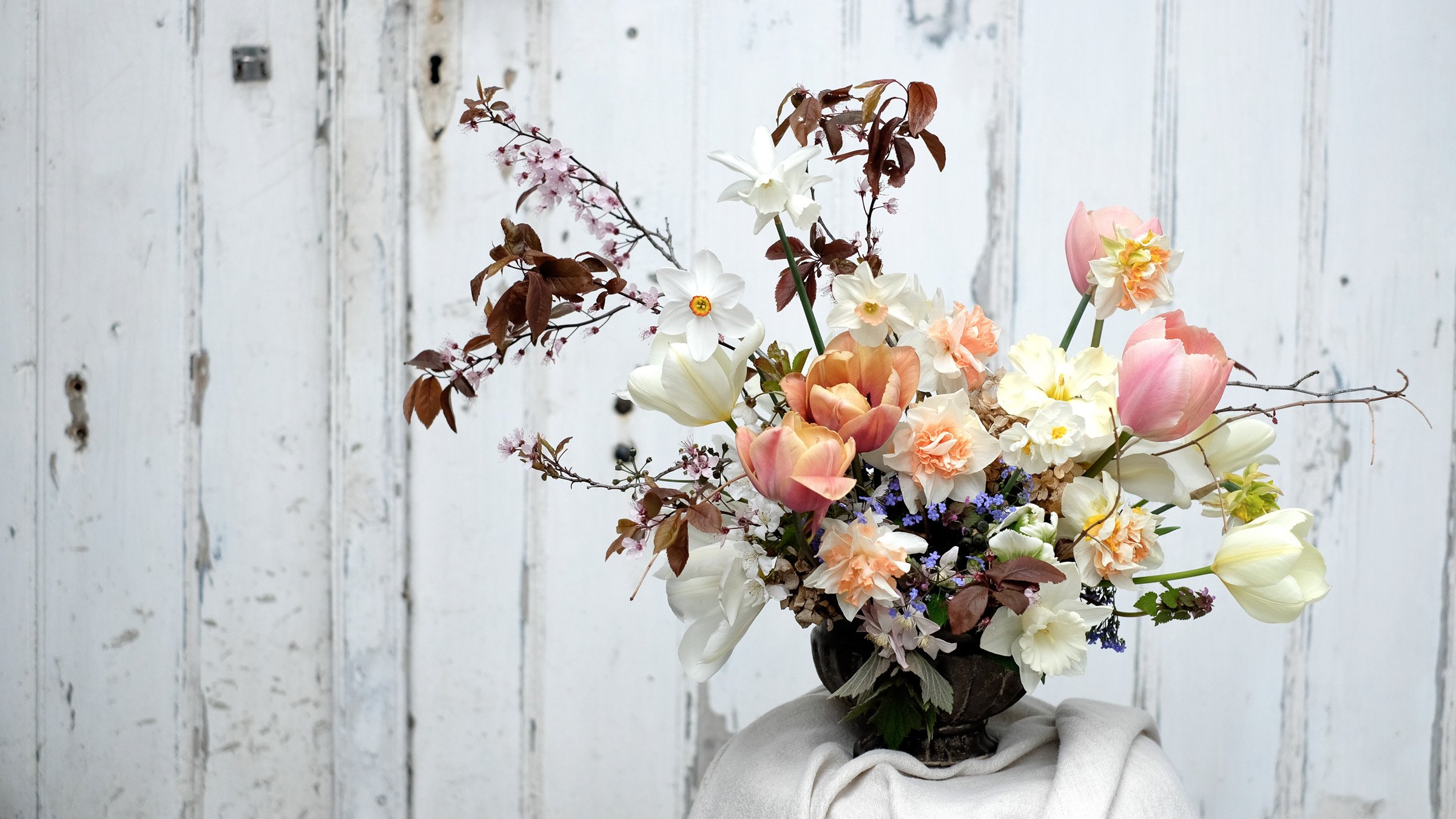
Slow Flowers –
Petition for a new floristry
Sustainable flowers grown locally instead of mass-produced overseas
Today, many of us take it for granted that we pay attention to where our food comes from. That our vegetables are not sprayed. And everyone now knows that seasonal fruit tastes much better than unripe fruit from other continents.
But hardly anyone thinks about where our flowers come from. No one wonders about roses in February and ranunculus in autumn.
Florist shops today often look like small, rural manufactories, but they are not. Almost 80% of the cut flowers sold in our country come from abroad. In countries like Colombia, Ethiopia or Kenya, they grow in huge farms and are harvested early. They are sprayed with products that are actually banned here in order to survive the long transport route. They are grown under ethically questionable working conditions, child labour is not uncommon.
What we then receive as a “flower” grows unnaturally straight, wilts quickly in the vase and is usually without any fragrance. In short: flowers have lost all their sensuality, they have become cheap, uniform mass-produced goods. Anyone who has ever seen the inside of a wholesale flower market knows what I am writing about.
The Making of the Slowflower Movement
Fortunately, there are idealists who – inspired by the Slow Food movement – have set out to give flowers back their sensuality.
The Slow Flower movement originated in the USA. Instead of vegetables, cut flowers are grown organically on small farms and sold at weekly markets, to florists and wholesalers. Many of these new flower farmers are career changers who wanted to combine their love of nature, their sense of aesthetics with a clever business model. The yield per square metre of cultivated area is much more lucrative for cut flowers than for organic vegetables. The writer Debra Prinzing can be considered one of the founders. She published the book “Slow Flowers” in 2014 and thus laid the foundation for the movement, which has been growing at a rapid pace internationally ever since.
Erin Benzakein, who has turned her small “Floret Farm” into probably the best-known cut flower farm in the world with great passion and terrific marketing, has certainly also played a decisive role in this. Her books are all bestsellers, she is a star in the social media and her followers are training to become flower farmers themselves in her online courses in order to follow her example.
Meanwhile, the movement is also growing in Germany and more and more small and large flower farms are springing up. There is a lively exchange in the social networks and just as many garden bloggers have discovered the topic for themselves in the last two years. Home-grown flowers have become a megatrend!

The New Aesthetic of Slow Flowers
Personally, I was particularly captivated by the aesthetics of these flowers and the new variety. Bouquets made from Slow Flowers look wilder, softer and at the same time much more modern. The flowers have organic shapes, crooked stems and even their decay in the vase is a spectacle that I love. The rooms are filled with fragrance. They are a piece of nature that suddenly breaks into our orderly interior world. I’m really addicted to the new varieties: cosmeas are no longer pink, but appear in delicate rosé-caramel, the poppy no longer blossoms in red, but in mystical grey-violet. And zinnias are now available in every conceivable pastel shade. And unfortunately there is not enough space here to rave about the incredible new varieties of tulips, daffodils and dahlias.
Slow Flowers from your own garden
But what is the easiest way to get these beautiful flowers? Simply grow them yourself in the garden! It is unbelievable how little space is needed for this: already on three to four square metres you can cultivate so many plants that you can harvest bouquets all summer long. With 10-20 square metres, I think you can call yourself a cut flower gardener. And with 100 square metres, nothing stands in the way of professional cut flower gardening. But the best thing is: growing flowers is definitely easier than growing vegetables and even beginners can succeed quickly if they follow the most important rules.
It is important to choose mainly plant species that produce flowers continuously. Perennials or bulbous plants such as tulips only produce flowers once a year. In contrast, annual flowers or dahlias can sprout a hundred flowers from one plant! The trick: the more often you cut them, the more blossoms will follow. And usually until the first frost.
Through the year with Slow Flowers
But the nice thing is that growing flowers in the garden is really addictive: as soon as autumn starts, I start thinking about and researching great new varieties that I really want to see in the garden next year. Winter is then shopping and planning time. Varieties are put together, seeds are bought, plans are written. And as soon as the first hint of spring is in the air, the sowing begins. In the meantime I sow until June, you can’t have enough flowers. And in summer and autumn you are rewarded with a rich harvest and a beautiful flower garden. I dry some of the flowers for floral projects in winter. Is there a more beautiful way to garden? Definitely not!
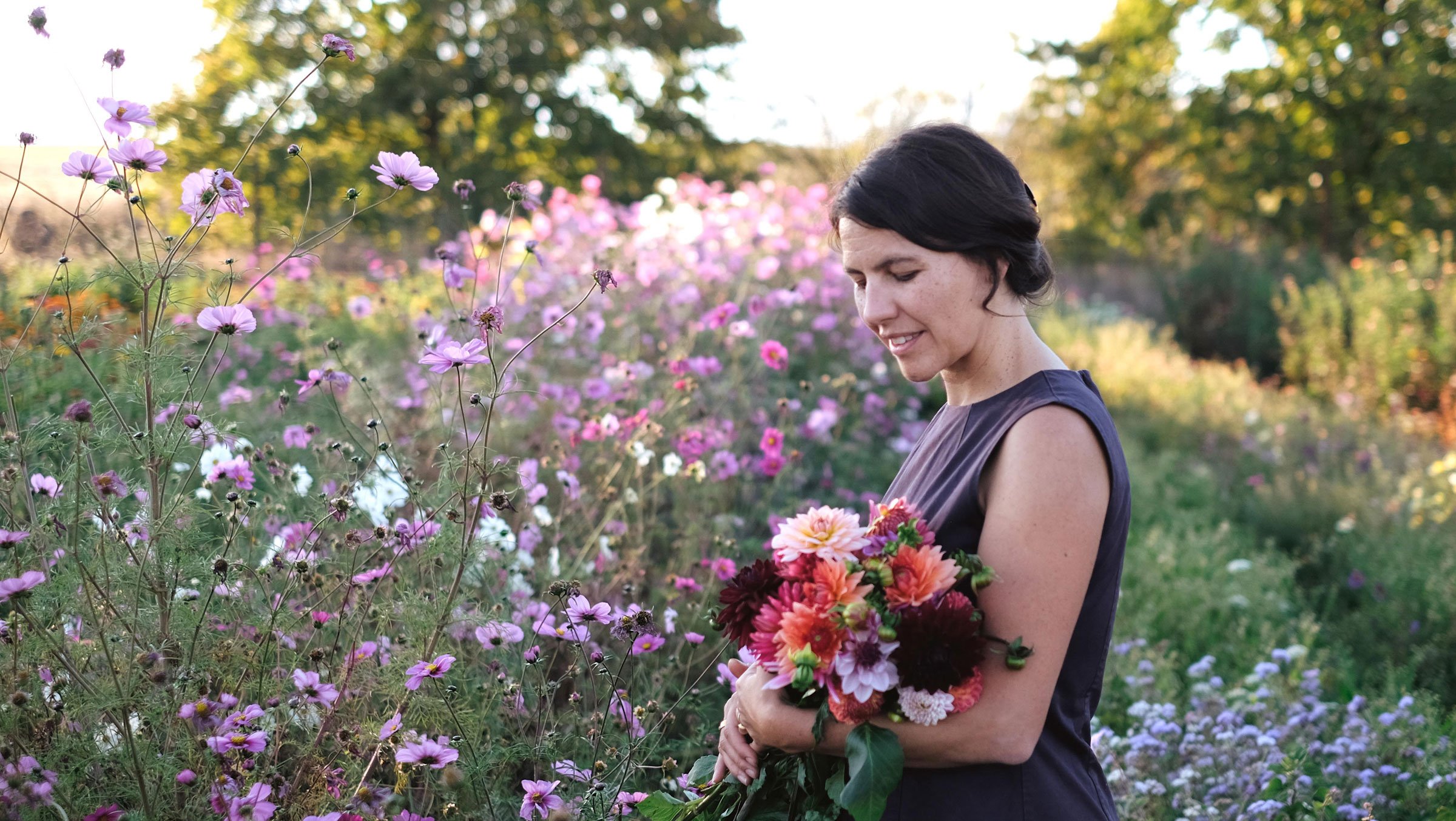
10 reasons why everyone should grow Slow Flowers in their garden:
1. The flowers are not sprayed and do not have to be transported long distances, they are not grown under unethical conditions
2. They transform the garden into an enchanted sea of blossoms
3. The effort for cultivation and care is less than for vegetables, the flowers are much less susceptible to pests
4. The flowers retain all their sensuality: they are fragrant and their organically grown shape is aesthetically exciting
5. They last much longer in the vase
6. They allow everyone to express themselves creatively
7. The seasonal nature of flowers means that the changing seasons can be experienced and enjoyed
8. They are much cheaper than bought flowers from the florist
9. You always have the perfect gift ready for friends and family
10. You can grow varieties that you would never find in a flower shop because their delicate flowers would never survive transport: poppies, cosmos, sweet peas, for example.

